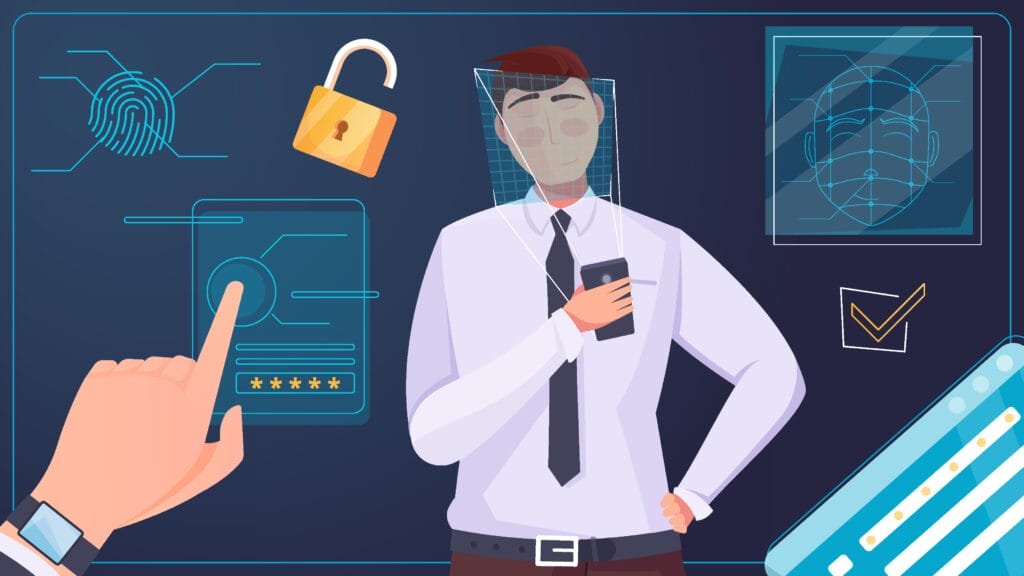Preventing Spectrum Identity Theft- Tips for Safeguarding Your Personal Information
In our digitally connected society, identity theft remains a serious issue. Spectrum Identity Theft is one of the more dangerous types of identity theft. This theft could result in significant financial and emotional distress since it involves illegal access to personal information through a variety of methods. We’ll analyze the dangers of Spectrum Identity Theft in this post and offer practical advice on how to properly protect your data.
Understanding the Risks of Spectrum Identity Theft
Types of Personal Information at Risk
A complex threat that compromises different types of personal information is spectrum identity theft. Realizing the kinds of data that are in danger is essential to appreciating how serious this problem is.
- Financial Information: This includes credit card numbers, bank account information, and transaction histories. Identity thieves can empty bank accounts and conduct illicit transactions with access to this data.
- Personal Identifiers: These include birthdates, Social Security numbers, and information from driver’s licenses and passports. Because these IDs are essential for gaining access to a multitude of services and accounts, they are very vulnerable to theft.
- Address and Contact Information: Email addresses, phone numbers, and physical addresses are useful to identity thieves for a range of fraudulent activities, such as impersonation and phishing scams.
- Online Account Credentials: Hackers are always looking for usernames, passwords, and security questions for online accounts, including social networking, email, and online stores. These credentials, once obtained, allow unlawful access to communications and personal information.
Methods Exploited by Identity Thieves
Identity thieves employ a range of sophisticated techniques to gain access to sensitive information:
- Phishing: Phishing is the practice of sending phony emails or messages that look authentic in an attempt to deceive people into sharing personal information or clicking on harmful links.
- Data Breaches: Hackers attack databases belonging to companies or institutions to obtain enormous volumes of personal information, frequently impacting many people.
- Malware and Spyware: When thieves infiltrate a device with malicious software, they can monitor keystrokes, gain access to files, and secretly retrieve confidential data.
- Skimming Devices: Unauthorized devices that are attached to card readers or ATMs to obtain card details during transactions.
Understanding these techniques is essential because it enables people to identify possible risks and take preventative action to protect their data from assaults. The key to reducing the hazards connected to Spectrum Identity Theft is awareness and vigilance.
Importance of Safeguarding Personal Information

It is impossible to overstate the significance of protecting personal data in the modern digital world. The consequences of Spectrum Identity Theft affect many aspects of a person’s life and go well beyond financial losses.
Protecting Financial Stability
The possible effects of identity theft on one’s capacity to maintain financial stability are among the primary concerns. Financial losses can be significant when bank accounts, credit cards, or loans are accessed without authorization. An individual’s financial stability can be negatively impacted by fraudulent activities and empty accounts, which can cause stress and make it more difficult to retrieve the stolen money.
Preserving Reputation and Trustworthiness
Identity theft damages a person’s reputation in addition to their financial situation. Fraudulent acts carried out under pretenses can harm an individual’s reputation and reliability, including their interactions with banks, jobs, and even friends and family.
Safeguarding Mental Well-being
It is impossible to ignore the psychological toll identity theft takes. Stress, anxiety, and a sense of being violated are common experiences for victims. Prolonged emotional suffering might result from the painstaking process of regaining one’s identity and constant fear of being used further.
Mitigating Legal and Administrative Hassles
Resolving errors in credit reports, submitting police complaints, and navigating legal processes are all part of dealing with identity theft’s aftermath. The lengthy and complex nature of these procedures causes sufferers to experience additional stress.
Being aware of how important it is to protect personal data encourages people to take preventative action. People may prioritize security, use preventive measures, and help create a safer digital environment for themselves and others by being aware of the more general effects of identity theft.
Tips for Preventing Spectrum Identity Theft

Adopting security procedures to reduce vulnerabilities and taking preventative action are necessary steps in defending against Spectrum Identity Theft. The following are thorough guidelines for protecting personal data:
Securing Personal Devices and Networks
- Update Software Regularly: To fix vulnerabilities in security, make sure operating systems, antivirus programs, and applications are all up to date with the most recent versions.
- Utilize Firewalls and Encryption: When sending sensitive data over networks, make sure to activate firewalls on your devices and use encryption.
- Use Secure Wi-Fi Networks: To prevent unwanted access, use secure, password-protected networks instead of connecting to public Wi-Fi when conducting sensitive transactions.
Implementing Strong Password Practices
- Create Complex Passwords: For every account, create a strong password that combines capital and lowercase letters, numbers, and special characters.
- Utilize Password Managers: Use password management software to safely keep and organize several passwords, which lowers the possibility of using weak or repeating passwords.
- Enable Multi-Factor Authentication (MFA): Whenever possible, turn on MFA to increase security by requiring multiple login credentials to access accounts.
Regularly Monitoring Credit Reports and Statements
- Check Credit Reports Regularly: Keep an eye out for any anomalies, strange accounts, or suspicious activity in your credit reports obtained from the main credit bureaus.
- Review Financial Statements: Regularly, check your credit card transactions, bank statements, and Internet payment history for any unusual or unauthorized purchases.
- Act Promptly on Suspicious Activity: To prevent further damage, notify financial institutions and the appropriate authorities as soon as you discover any suspicious conduct.
Through the implementation of preventive measures and a proactive approach toward preventing Spectrum Identity Theft, individuals can effectively mitigate potential threats and protect their personal information.
The Role of Education in Prevention
Education is essential in the fight against Spectrum Identity Theft because it provides people with the knowledge, awareness, and preventative techniques they need to protect their data.
Increasing Awareness of Identity Theft Risks
- Understanding the Threat Landscape: It is easier to identify such hazards when people are aware of the various techniques identity thieves utilize, like phishing, data breaches, and social engineering.
- Highlighting the Value of Personal Information: Increasing awareness of the importance of personal information and the possible repercussions of its misuse leads to a more cautious attitude toward the sharing of sensitive data.
Empowering Individuals with Preventive Measures
- Sharing Best Practices: People can be given useful protection techniques by educating them about the best practices for device security, strong password creation, and sharing personal information with caution.
- Promoting Cyber Hygiene: Users’ vulnerability to cyber dangers is decreased when they are taught how to practice good cyber hygiene, which includes frequent updates, secure connections, and safe browsing practices.
Fostering a Culture of Responsibility
- Encouraging Proactive Measures: Education fosters a sense of accountability in people, encouraging them to take proactive measures to secure their data and make the internet a safer place.
- Promoting Reporting of Suspicious Activity: Encouraging people to quickly report suspicious activity to appropriate authorities or groups can aid in the early detection and mitigation of possible hazards.
By empowering people via education, we can build a resilient community that has the knowledge and resources needed to reduce the risks associated with spectrum identity theft. Education becomes a powerful tool in the battle against identity theft by encouraging a culture of awareness and proactive security measures.
Immediate Actions to Take if Identity Theft is Suspected

It’s critical to take immediate action to minimize potential harm and restore control over one’s personal information when identity theft is suspected. Following are some quick actions to take:
Contact Financial Institutions and Credit Bureaus
- Notify Banks and Creditors: Financial institutions should be contacted right away if you suspect identity theft. To stop more unauthorized transactions, change the passwords and freeze the impacted accounts.
- Alert Credit Bureaus: To stop fraudulent activity and unauthorized credit applications, report suspected identity theft to the three main credit bureaus (Equifax, Experian, and TransUnion) and ask for a fraud alert or credit freeze.
File Reports and Documentation
- File a Police Report: Get a copy of the police report and report the identity theft to the local law enforcement. When opposing fraudulent acts, this paper might be used to prove the crime.
- Document Details and Transactions: Maintain thorough records of all correspondence, transactions, and relevant dates about the suspected identity theft. This paperwork facilitates the process of resolution.
Seek Assistance from Identity Theft Protection Services
- Engage Identity Theft Protection Services: Take into consideration signing up for the services that many businesses provide to prevent identity theft. These services keep an eye out for suspicious behavior and help with identity theft problems.
- Utilize Available Resources: To assist you in navigating the process of recovering from identity theft, make use of the resources offered by consumer protection groups or government agencies.
The key to minimizing the possible consequences of identity theft is to act quickly and methodically upon suspicion. People can take charge of the circumstance and start recovering their stolen identity by quickly reporting and documenting the incident, requesting assistance from the appropriate authorities, and putting security measures in place.
Conclusion
Taking preventative steps and maintaining constant surveillance are necessary to protect personal information from spectrum identity theft. People can greatly lower their chance of becoming identity theft victims by putting the recommended advice into practice and remaining aware.
FAQs
How common is Spectrum Identity Theft?
Spectrum Identity Theft, encompassing various personal information breaches, is increasingly prevalent in today’s digital age. Statistics reveal a rising trend in cyber threats targeting sensitive data across multiple sectors.
Can freezing credit reports prevent identity theft?
Freezing credit reports is an effective measure to prevent unauthorized access to credit information. It restricts lenders from viewing credit reports, reducing the risk of fraudulent accounts being opened in one’s name.
What steps should I take if I suspect my identity has been stolen?
If you suspect identity theft, act swiftly. Contact financial institutions, report the incident to credit bureaus, file a police report, and engage in identity theft protection services. Keep detailed records and follow guidance from authorities.
Are there any government resources available for identity theft victims?
Yes, several government agencies offer resources and assistance for identity theft victims. The Federal Trade Commission (FTC) provides guidance, and organizations like the Identity Theft Resource Center (ITRC) offer support and resources for victims.
How can education and awareness programs help in preventing identity theft?
Education and awareness programs play a pivotal role in preventing identity theft by empowering individuals with knowledge about potential risks, preventive measures, and immediate actions to take when facing such threats. Increased awareness fosters a proactive approach to personal security.








Your article helped me a lot, is there any more related content? Thanks!